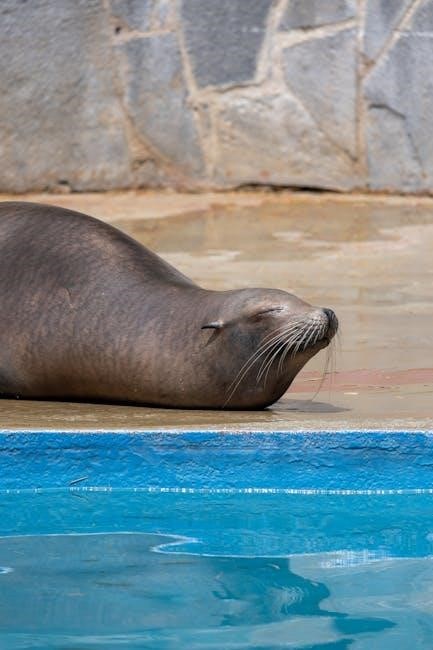Installing an above ground pool requires careful planning and execution to ensure safety and enjoyment. This guide provides step-by-step instructions for a successful setup, covering site preparation, assembly, and maintenance. Proper installation is crucial for longevity and functionality, so follow these instructions closely to achieve professional results.
1.1 Overview of Above Ground Pools
Above ground pools are freestanding structures designed for recreational swimming, offering a cost-effective and versatile alternative to in-ground pools. They come in various shapes, sizes, and materials, such as metal, resin, or hybrid frames, and include components like liners, pumps, and filters. These pools are popular for their ease of installation and customization, making them suitable for different backyard spaces. They also feature safety options like ladders and fencing, ensuring a secure and enjoyable swimming experience for families.

1.2 Importance of Proper Installation
Proper installation is crucial for the safety, longevity, and functionality of your above ground pool. A well-installed pool ensures a stable structure, prevents leaks, and avoids costly repairs. Leveling the ground correctly and assembling the frame accurately are essential to maintain the pool’s integrity. Additionally, proper installation ensures the liner fits securely, reducing the risk of tears or wrinkles. Safety features like ladders and fencing must also be correctly installed to prevent accidents. A professional setup guarantees years of enjoyable swimming experiences for you and your family.
Site Preparation for Above Ground Pool Installation
Site preparation is the foundation of a successful pool setup. Clear debris, level the ground, and mark the pool area accurately. Ensure the surface is firm and even, avoiding soft or uneven spots. Proper preparation prevents structural issues and ensures the pool sits securely, providing a safe and enjoyable swimming environment.
2.1 Leveling the Ground
Leveling the ground is crucial for a stable pool installation. Use a shovel and spirit level to ensure the surface is even. Check for any dips or mounds, and fill them with soil, tamping it down firmly. Repeat until the entire area is perfectly level. A uneven base can cause the pool walls to lean or the liner to wrinkle, leading to potential damage or safety hazards. Proper leveling ensures a smooth and secure installation process.
2.2 Marking the Pool Area
Marking the pool area ensures accurate installation boundaries. Use a tape measure to determine the pool’s diameter or dimensions. Place a stake at the center and tie a string to it, marking the circumference with spray paint. For rectangular pools, mark the length and width. This step guarantees the pool fits perfectly within the prepared space, avoiding costly adjustments later. Double-check measurements to ensure precision and alignment before proceeding with site preparation.

Choosing the Right Above Ground Pool Kit
Selecting the right above ground pool kit involves considering size, shape, and features. Kits include frames, liners, pumps, and hardware, ensuring compatibility and ease of installation. Choose a kit that fits your space and budget, with optional accessories like ladders and fencing. Look for reputable brands offering warranties for durability and customer support. Proper selection ensures a seamless setup and lasting enjoyment of your pool.
3.1 Components of a Pool Kit
A typical above ground pool kit includes essential components like the pool frame, liner, top rails, and hardware. The frame provides structural support, while the liner ensures water containment. Additional features may include a pump and filter system for water circulation and purification. Some kits also offer optional accessories like ground cloth or padding for added protection. These components are designed to work together seamlessly, ensuring a safe and functional pool setup. Proper assembly of these parts is crucial for longevity and performance.
3.2 Factors to Consider When Selecting a Pool
When choosing an above ground pool, consider size, shape, and available space to ensure proper fit. Assess the material and durability, opting for rust-resistant steel or durable resin. Check the warranty and included accessories, such as ladders or fencing, to meet safety needs. Optional features like pool lighting or a saltwater system may enhance your experience. Budget is also a key factor, as costs vary based on size and features. Select a pool that balances functionality, aesthetics, and your specific requirements for long-term satisfaction.
Preparing the Ground for Pool Assembly
Preparing the ground for pool assembly involves clearing debris, removing grass, and leveling the surface. Ensure the area is firm, even, and free from obstructions for a stable base.
4.1 Clearing Debris and Vegetation
Clearing debris and vegetation is essential for a smooth pool installation. Remove rocks, branches, and leaves to ensure a clean surface. Use shovels or sod-cutting tools to strip grass and sod, as uneven terrain can cause liner damage. Properly dispose of all cleared materials to prevent re-debris. This step ensures a stable and even base for your above ground pool, promoting safety and longevity. Always wear protective gear during cleanup.
4.2 Ensuring a Firm and Level Surface
After clearing debris, ensure the ground is firm and level. Use a spirit level to check evenness and a hand tamper to compact the soil. Fill any low spots with compacted soil and recheck the level. A firm base prevents shifting and ensures the pool sits properly. Avoid soft spots, as they can cause structural issues. Proper leveling guarantees a stable foundation for your above ground pool, ensuring safety and optimal performance during use.
Assembling the Pool Frame
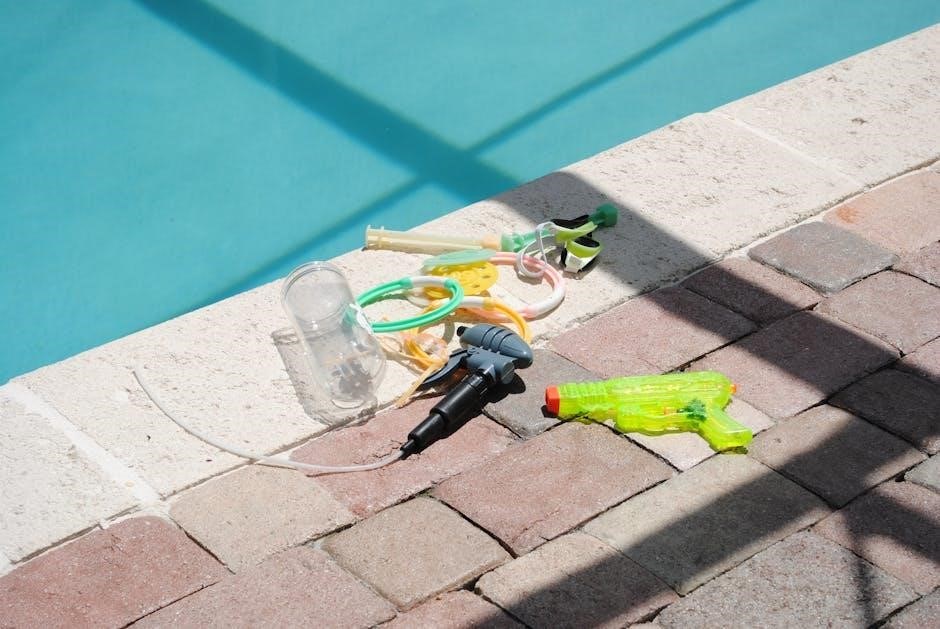
Start by laying out the bottom track, ensuring all pieces fit securely. Attach the side walls and top rails, following the manufacturer’s instructions for proper alignment and tightening. Ensure all connections are secure to maintain the pool’s structural integrity and stability. Proper assembly guarantees a safe and durable pool frame, ready for the liner installation. Follow the manual closely to avoid errors. Use the provided hardware and tools for a precise fit. Double-check all bolts and connections before moving forward. A well-assembled frame is essential for the pool’s longevity and performance.
5.1 Laying Out the Bottom Track
Begin by identifying the center point of your pool area and marking it with a stake. Use a tape measure or string to mark the pool’s circumference, ensuring accuracy. Lay out the bottom track pieces around the marked area, connecting them securely. Ensure all sections fit snugly together, forming a perfect circle or oval shape. Check the track for levelness and make adjustments as needed. Secure the track to the ground temporarily to maintain its position during assembly. Proper alignment is crucial for a stable pool frame.
5.2 Attaching the Side Walls and Top Rails
After laying the bottom track, attach the side walls to the track using the provided hardware. Ensure each panel is upright and properly aligned with the adjacent sections. Once the walls are secure, install the top rails, connecting them to the side walls to form the pool’s frame. Tighten all bolts and screws firmly to ensure stability. Double-check that the structure is level and square before proceeding. This step is critical for the pool’s structural integrity and proper liner fit.
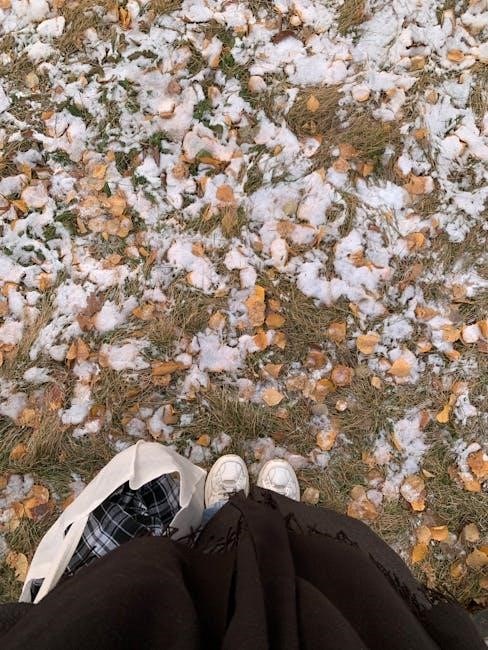
Installing the Pool Liner

Gently place the liner inside the pool frame, smoothing out wrinkles. Secure the liner to the top rails and ensure a tight, even fit around the pool edges.
6.1 Placing and Securing the Liner
Place the liner gently into the pool, ensuring it fits snugly against the walls. Smooth out wrinkles by hand or with a soft brush. Secure the liner to the top rails using clips or straps provided in the kit. Check for a tight fit and proper positioning to avoid air pockets or creases. Ensure the liner is centered and evenly spread for optimal performance and longevity. Proper securing prevents shifting during use and extends the liner’s lifespan.
6.2 Ensuring a Proper Fit
After placing the liner, inspect the fit by walking around the pool. Ensure the liner is taut and evenly spread without wrinkles or sagging areas. Check the bottom seam for alignment with the pool floor. Use a soft brush to smooth out any remaining creases. Ensure all edges are securely fastened to the top rails to prevent shifting. A proper fit prevents leaks and ensures the liner lasts for years, maintaining your pool’s appearance and functionality.
Adding Safety Features
Safety features like pool ladders and fencing are essential to prevent accidents and ensure secure access to the pool. Proper installation enhances safety and accessibility;
7.1 Installing Pool Ladders
Installing pool ladders ensures safe entry and exit, especially for children and older users. Choose durable, rust-resistant ladders that match your pool size. Follow manufacturer instructions to secure the ladder to the pool frame and deck. Ensure the ladder is level and sturdy to prevent accidents. Regularly inspect the ladder for wear and tear, replacing any damaged parts promptly to maintain safety standards. Proper installation is key for reliability and user confidence.
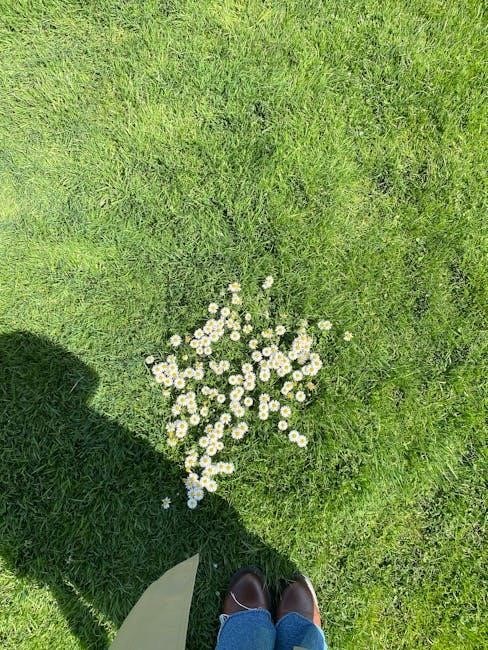
7.2 Setting Up Pool Fencing
Pool fencing is essential for safety, especially if you have children or pets. Choose durable materials like metal or vinyl that withstand weather conditions. Ensure the fence meets local safety regulations and is at least 4 feet tall. Install the fence around the pool perimeter, ensuring gates are self-closing and self-latching. Regularly inspect the fence for damage or wear. Proper fencing helps prevent accidents and ensures compliance with safety standards, giving you peace of mind while enjoying your pool.

Finalizing the Installation
Connect the pump and filter system, ensuring proper water circulation. Test for leaks and confirm all components are secure. Add pool chemicals and prepare for safe enjoyment.
8.1 Connecting the Pump and Filter System
Connect the pump and filter system to ensure proper water circulation and filtration. Place the equipment on level ground near the pool. Follow the manufacturer’s instructions to attach hoses and electrical connections. Secure all fittings tightly and test for leaks. Turn on the system to verify smooth operation. Ensure the filter cycles water effectively and the pump maintains optimal pressure. Proper installation guarantees clean and safe water for swimming. Always refer to your pool kit’s manual for specific guidance.
8.2 Testing the Pool for Leaks
After installation, thoroughly inspect the pool for leaks to ensure water tightness. Fill the pool with water and closely examine the seams, connections, and liner. Look for any water seeping from the frame or beneath the pool. Check the pump and filter system for proper function. Monitor the water level over time to detect any gradual leaks. Address any issues promptly to prevent damage and maintain the pool’s structural integrity for years to come.

Maintenance and Troubleshooting
Regular pool maintenance is essential for longevity. Clean the pool, inspect equipment, and address issues promptly. Troubleshoot common problems like leaks or faulty filters to ensure optimal performance.
9.1 Regular Maintenance Tasks
Regular maintenance ensures your above ground pool remains safe and functional. Skim the surface daily to remove debris and vacuum the pool floor weekly. Check chemical levels and adjust as needed to maintain proper balance. Inspect the pump, filter, and ladder for signs of wear. Clean the skimmer and filter regularly to ensure optimal water circulation. Monitor the pool liner for tears and address any issues promptly to prevent leaks. Consistent upkeep prevents contamination and extends the pool’s lifespan.
9.2 Common Issues and Solutions
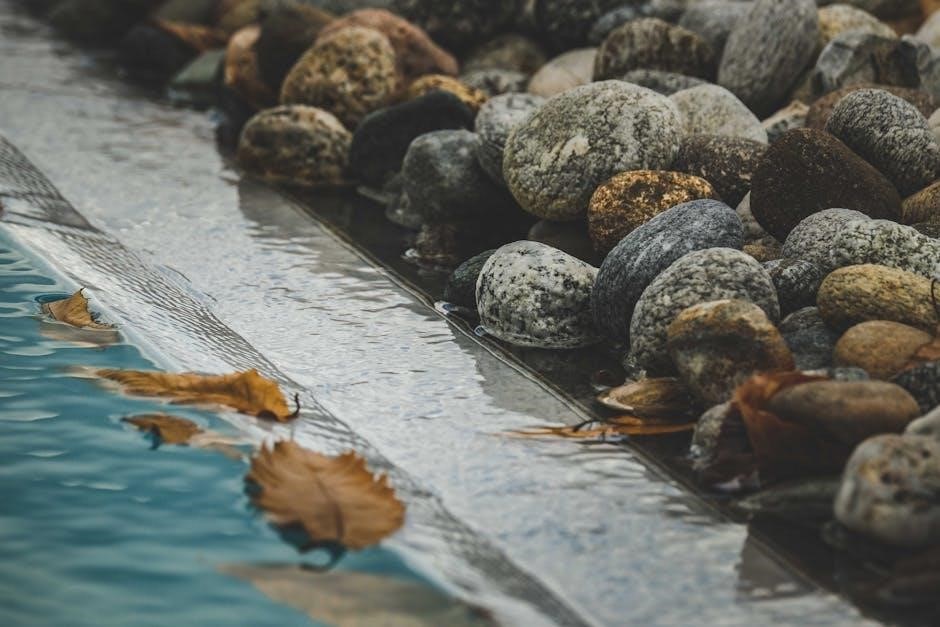
Common issues with above ground pools include leaks, liner damage, and pump malfunctions. For leaks, inspect the liner and seals, patching any tears with a kit. If the pump isn’t working, check for clogs or worn-out parts. Cloudy water often results from imbalanced chemicals; test and adjust levels. Regularly inspect the pool frame for rust or weakness. Addressing these issues promptly prevents further damage and ensures a safe, enjoyable swimming experience throughout the season.
With proper planning and execution, installing an above ground pool can be a rewarding DIY project. By following these instructions, you’ll ensure a safe and enjoyable swimming experience for years to come. Regular maintenance and prompt issue resolution are key to preserving your pool’s condition. Remember to always follow safety guidelines and manufacturer recommendations. Once complete, your above ground pool will become a cherished spot for relaxation and family fun. Dive in and enjoy the fruits of your labor!
